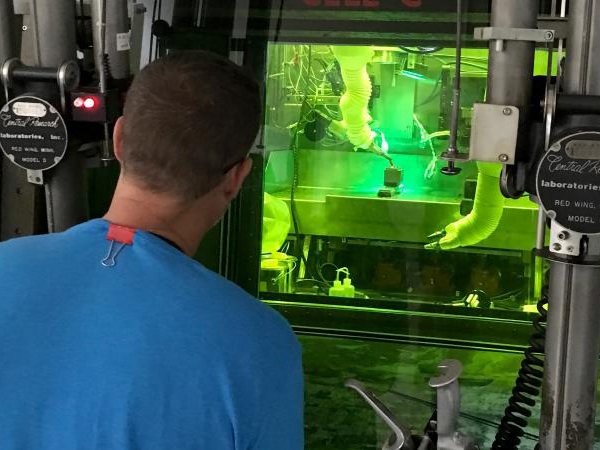ORNL works with several institutions and industry partners in one of its neighboring states, North Carolina. The laboratory has licensed a chemical processing technology for commercial use to Marshallton Research Laboratories to separate rare earth elements and holds a cooperative research agreement with Novus Energy Technologies, a high efficiency thermoelectric systems firm.

ORNL’s user facilities offer a diverse set of tools for experiments across a range of fields, including biology, materials and energy sciences, physics, engineering, and chemistry. Learn more about ORNL’s user facilities. Data reflects fiscal year 2020 except for scientific publications, which covers 2016–2020. Partner stories reflect work conducted from 2016 to present.

ORNL materials scientists are working with the Electric Power Research Institute, or EPRI, to understand corrosion processes that impact performance lifetimes of commercial alloys used in fossil-fuel power systems. ORNL specializes in the research and development of materials for extreme environments, especially high-temperature alloys needed for industrial processes and nuclear reactors. The longstanding partnership with EPRI has also led to welding technology innovations that make it possible to perform repairs on irradiated materials, advancing the safety and efficiency of commercial nuclear power generation.
Learn more about materials science and technology at ORNL.
ORNL news release: ‘Researchers run first tests of unique system for welding highly irradiated metal alloys‘

A new technology for chemically separating rare earth elements has been licensed to Marshallton Research Laboratories, a North Carolina-based manufacturer of organic chemicals for a range of industries. This new technology has the potential to create a dramatic, beneficial shift for producers in the United States. Developed by scientists from ORNL and Idaho National Laboratory under the Department of Energy’s Critical Materials Institute, this technology gives scientists and researchers insight into how to cost-effectively separate high-demand rare earth elements, which must be chemically separated to make them useful for technological applications. Rare earth elements are critical to producing electronics, optical technologies, alloys, and high-performance magnets.

The US Forest Service Southern Research Station collaborated with scientists at ORNL and other institutions to develop the ForWarn satellite-based vegetation tracking tool, which helps scientists and forest and land managers track disturbances from wildfires, storms, pests, and disease outbreaks on lands across the nation. After Hurricane Helene, the ORNL-maintained tool was used to assess damage to the forest canopy in western North Carolina and adjacent areas. ForWarn has also been used to track damage by the wooly adelgid pest in the Great Smoky Mountains and the effects of wildfires nationally.
For more information, contact [email protected].
